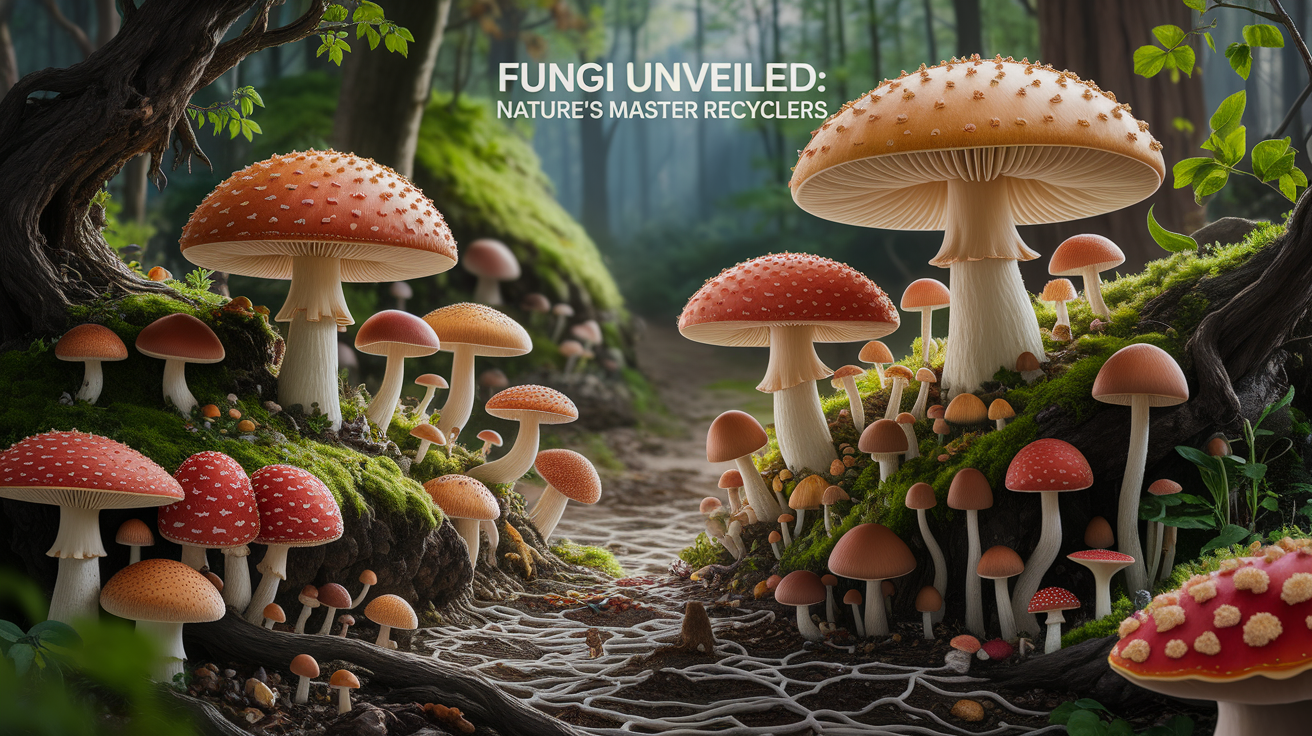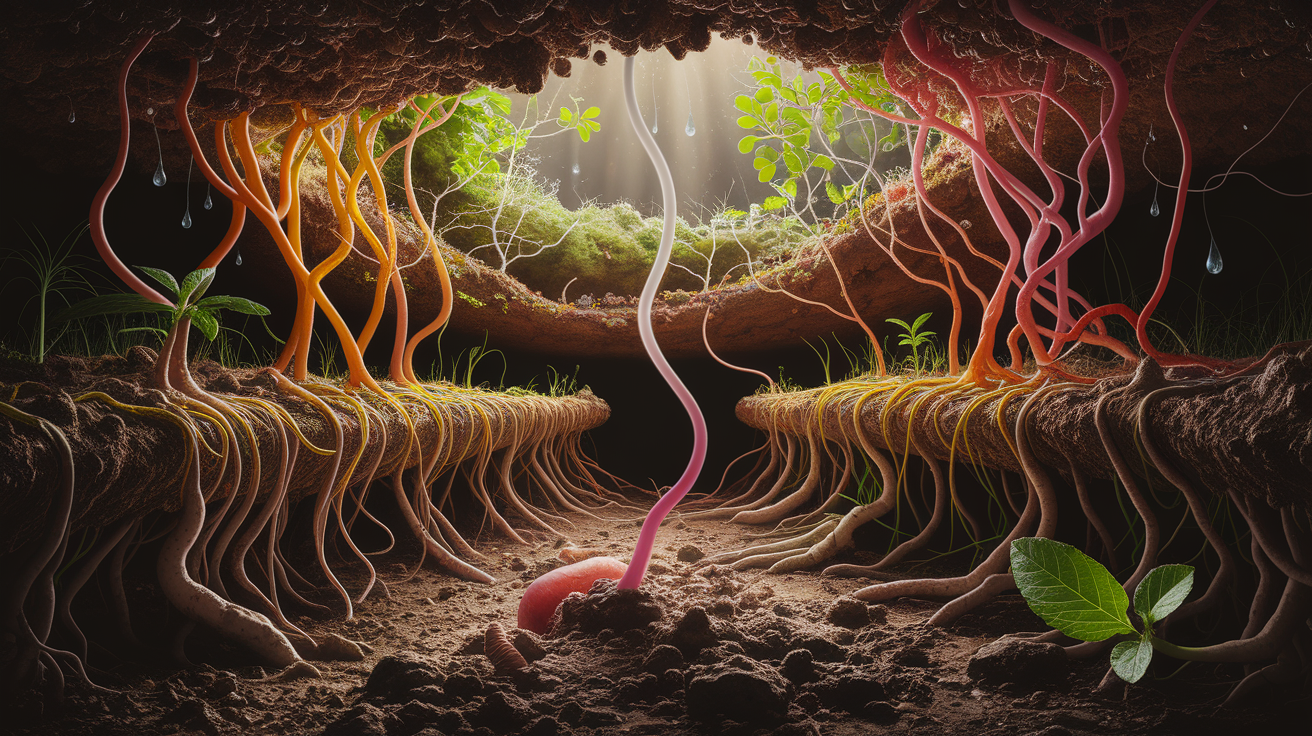Quick Answer: Fungi break down dead organic material using powerful enzymes, turning complex plant and animal matter into simpler molecules that enrich the soil. This process is essential for nutrient cycling, waste removal, and maintaining healthy ecosystems.
Fungi Unveiled: Nature’s Master Recyclers
When it comes to cleaning up the natural world, fungi are the ultimate behind-the-scenes workers. These extraordinary organisms excel at breaking down organic matter and recycling nutrients. Acting as nature’s master recyclers, they dismantle the remains of plants, animals, and other organisms into components that can be reused by the living world.

Most fungi accomplish this through vast underground networks called mycelium. These thread-like hyphae snake through soil, wood, and leaf litter, seeking out material to digest. Once they find a tasty morsel — say, a fallen tree branch — they launch an astonishing chemical assault to turn it into food for themselves and nutrients for the ecosystem.
The Enzymatic Arsenal: Molecular Tools for Decomposition
Fungi are expert chemists. To digest tough organic matter, they release a range of extracellular enzymes — a molecular toolkit so sophisticated it can dismantle the most stubborn materials in nature.

- Cellulases – Break down cellulose, the main building block of plant cell walls.
- Ligninases – Bust apart lignin, the rigid “glue” that strengthens wood.
- Proteases – Slice proteins into amino acids.
- Lipases – Split fats into smaller, absorbable molecules.
- Chitinases – Target chitin, found in fungal cell walls and insect shells.
These enzymes work outside the fungal cells, like a “dining service” that pre-chews food. The resulting smaller molecules are then absorbed through the fungal cell walls and turned into energy and biomass.
Mycelial Networks and Environmental Drivers
The activity of fungi’s underground networks depends heavily on environmental conditions. Factors such as moisture, temperature, oxygen, and nutrient levels can dramatically affect the rate of decomposition.

- Temperature – Fungi have optimal ranges for activity; too hot or too cold slows them down.
- Moisture – Water is essential for enzyme action; dry conditions limit decomposition.
- Oxygen availability – Most fungi require oxygen; low-oxygen environments cause decomposition to crawl.
- Nutrient composition of the substrate – Nitrogen-poor material slows fungal growth and enzyme production.
According to soil biology research, these environmental variables regulate how fast fungi can break down organic matter, which in turn influences soil fertility and the pace of the nutrient cycle.
Saprotrophic vs. Ectomycorrhizal Strategies
Not all fungi decompose matter in the same way. Two broad strategies dominate the fungal world:

- Saprotrophic fungi – These are the classic “rotters” like many wood decay fungi. They feed entirely on dead organic material, breaking it down for carbon and other nutrients. Leaf litter decomposition in forests often owes much to these fungi.
- Ectomycorrhizal fungi – These fungi form partnerships with plant roots, directly swapping nutrients. While their main goal isn’t to dismantle cellulose and lignin, studies show they can still break down certain soil organic compounds — particularly proteins and chitin — to access nitrogen and phosphorus. This makes them key players not just in decomposition, but in supporting plant growth.
The two strategies often complement each other in ecosystems, ensuring a complete nutrient turnover from dead matter back into living tissues.
Beyond the Breakdown: Fungi’s Role in Earth’s Nutrient Cycles
Decomposition is just the beginning. By reducing leaves, wood, and other detritus into elemental components, fungi drive the carbon cycle and broader nutrient cycles on our planet.

Here’s what they contribute:
- Carbon Release and Storage – Some carbon from decomposed material is released as CO₂, while some is stored in stable soil organic matter.
- Nitrogen Mineralization – Proteins broken down by proteases release nitrogen, making it available to plants and microorganisms.
- Soil Formation – The residues and by-products of fungal decomposition contribute to humus, improving soil structure and water retention.
- Ecosystem Productivity – Nutrient-rich soils promote more robust plant growth, feeding the entire food web.
Without fungi, nutrients would remain locked in dead material, and ecosystems would quickly run short of the raw ingredients for new life.













